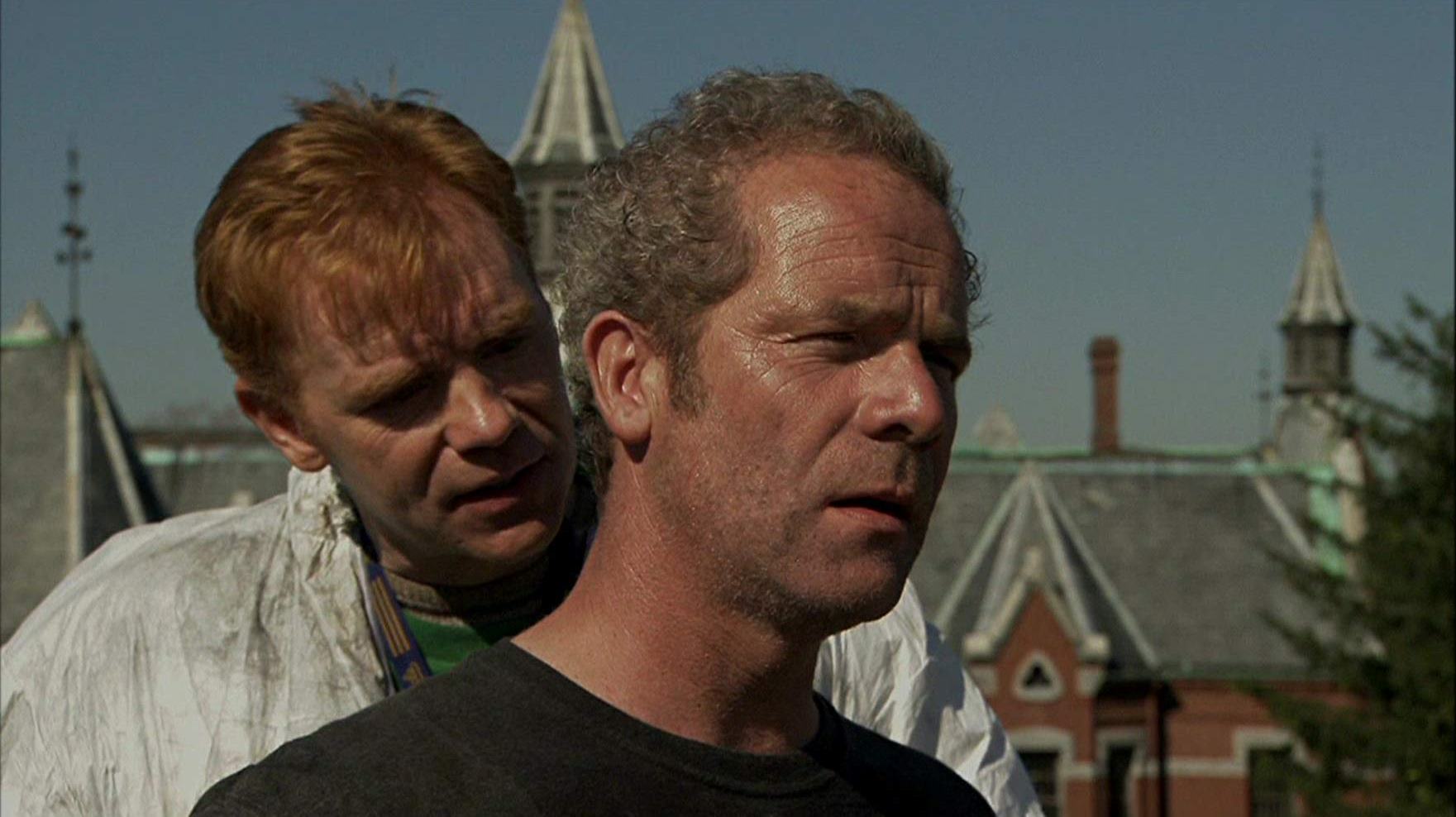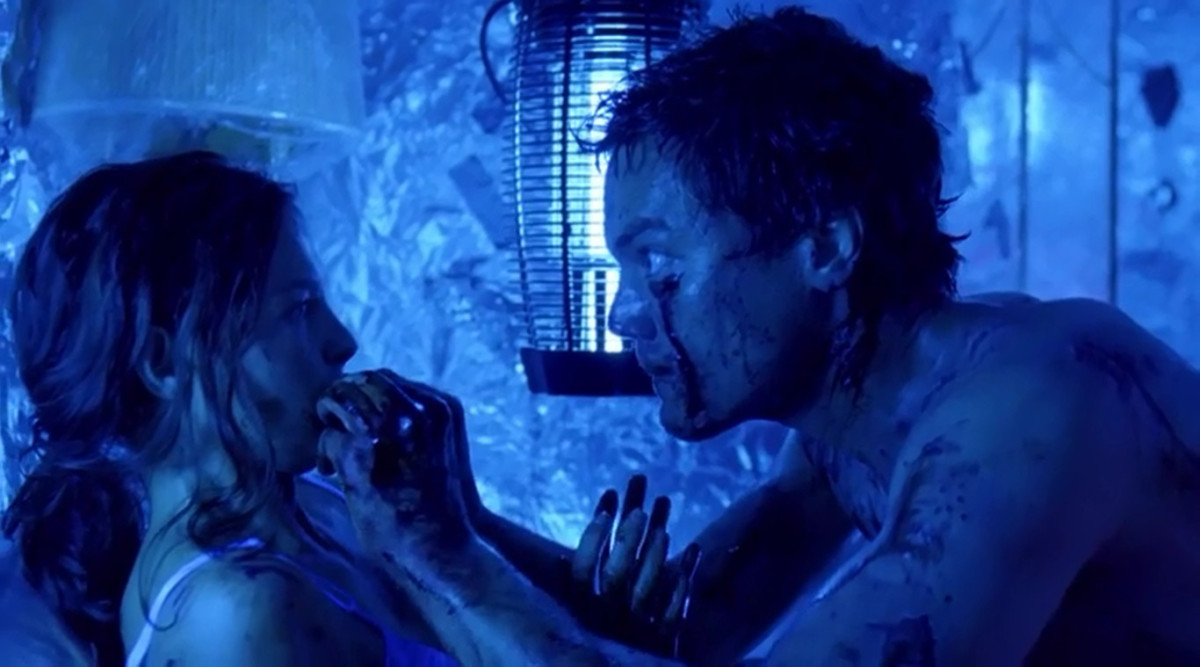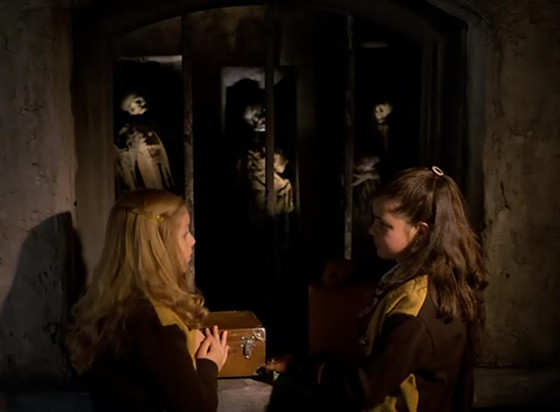5. Symptoms (1974)

Two young girls, Helen and Anne, spend time in a lonely and idyllic country estate. Only the handyman Brady is still there, but Helen, whose home it is, completely ignores Brady. However, after a short time Anne imagines that someone is still in the house. She hears footsteps and laughter, and besides, there seems to have been a certain friend named Cora once, but she seems to have disappeared. Helen occasionally sees Cora in the mirror, or in brief visions, but what actually is going on?
Polanski’s “Repulsion” had been one of the most influential films of the genre, and now Edgar Wright’s new film is also said to be influenced by it. “Symptoms” is one of the first films that was heavily influenced by it, but it stands as an original and chilling work on its own. Certainly a slow burner, but the amazing score and effective direction creates such a haunting atmosphere. Fans of the genre will predict one or two beats but at the same time, if you’re a fan of the whole deranged women stories, “Symptoms” is one of the finest British horrors of the ‘70s that has a lot to offer to satisfy fans. Overall, sometimes the originality of the plot is not what we’re looking for. As the great man Roger Ebert himself said; “It’s not what is it about but how it is about.”
4. May (2002)

Even though it was made on a very small budget – under $2 million – the 2002 Sundance breakout “May” still flopped at the box office grossing only $634,803, which is a shame, because it’s an amazing film in search of a bigger audience. It’s not even that inaccessible. Thanks to internet fans, its reputation had been slightly rising since then, but not enough. The film follows a young, strange girl named May Kennedy. She was born with an eye defect and made no friends as a child with an eye patch, making her a quirky adolescent. As an adult, her eye is corrected, but she still has no friends. Her only ally is her doll Susy, which was given to her by her mother. Now she desperately wants to connect with society, with other people… to disastrous effects.
Childhood traumas and loneliness have long been an important topic in horror films, for obvious reasons. Just last year we got “Rent-A-Pal,” another underrated film dealing with similar themes. “May” is just an excellent film, amazingly acted by the whole cast and the story is just gripping right from the start. It also works as a character study. After finishing the film, you’ll find it strange that Angela Bettis’ career didn’t get any bigger than this because she’s so great in this – she portrays a character in such an impressive way that you’re both afraid of her but also feel empathy for her.
3. Session 9 (2001)

Brad Anderson has to be one of the most underappreciated thriller-horror directors around, though his first two films were basically romantic comedies and he succeeded at that as well. Perhaps best known for the Christian Bale vehicle ‘The Machinist,” his filmography is full of gems like this one. Maybe it doesn’t deserve to be here because seemingly in the last few years, similar to “May,” this one also started to get more and more attention among horror fans, but still it’s a great film that should be mentioned whenever it’s possible.
“Session 9” follows an asbestos abatement crew who begin to experience growing tensions while working in an abandoned mental asylum (shot at an actually abandoned mental asylum, which helps to build the atmosphere). The ending will make you debate about what it all meant, but it’s not a film that relies on twist only. Its use of sound and score are excellent. Some amazing voice acting as well; one particular character named Simon, which we can only hear from the tapes, is sure to give many people nightmares. It may or may not have supernatural elements depending on your interpretation, but its psychological aspects are very strong, trying to understand if we all have dark sides, and how and when those feelings we repress finally awaken. Maybe we all have Simons in ourselves.
2. Bug (2006)

There’s a psychiatric syndrome in which symptoms of a delusional belief, and sometimes hallucinations, can be transmitted from one individual to another. It’s called “folie à deux.” There’s even a great “X-Files” episode on this. Is William Friedkin’s excellent “Bug” also about this subject? It’s up to you, maybe, because is it all real? Friedkin loves ambiguity; he doesn’t like to give direct answers, finding it all boring because life is not black and white according to him.
A paranoiac drifter and war veteran meets with a woman who has her own problems. They start to develop a romance, but he is convinced that the two are being watched by the U.S. government, who infested their room with bugs (delusional parasitosis). In times where we keep hearing about conspiracy theories all the time by certain paranoid people, “Bug” might be the right film for our times. Ashley Judd and Michael Shannon are pitch-perfect here, two of the finest performances of 2006. Friedkin brilliantly uses the claustrophobic setting, but doesn’t see it as a horror film. To him, it’s more of a romance and black comedy. Then again, it’s the same guy who thinks “The Exorcist” is not a horror. So, it’s better for you to watch and decide. “Bug” was one of the most divisive films of Cannes Film Festival in 2006; it’s understandable that it can be “too much” for some viewers, but still it deserves to be seen.
1. Veneno para las hadas (1984)

The list was heavily dominated by English-language cinema, mostly from the U.S. but some U.K. and Australian titles as well. Yet our number one film on this list comes from Mexico, a Spanish-language film called “Veneno para las hadas”; or in English, “Poison for the Fairies.” A haunting, atmospheric, and stylish film with some unforgettable imagery. It’s the kind of film that is horror, but if you’d just randomly look at one or two scenes, you wouldn’t realize it. The story deals with Flavia, a young aristocratic girl. She’s new to the town but soon befriends Veronica, a lovely little girl who lives with her nanny and grandma. We don’t know how her parents died and soon learn that she’s alienated in the school. Her classmates call her a “witch.” Flavia finds it all fascinating and Veronica convinces her that she truly has some magical powers.
Thanks to excellent direction, the film is full of memorable great scenes and also great to look at because of great cinematography. It’s not necessarily scary, but the build-up to the end is very intriguing and engaging. The movie explores the psychology of two little girls and their naïve way of looking at things. A very distinctive feature, in fact, because we almost never see any adults in the movie. It’s all from a child’s perspective. There’s a bit of a feeling of a fairy tale in the narrative. The wonderful score and the terrific use of settings also help this to turn into a twisted fairy tale that will haunt you forever.